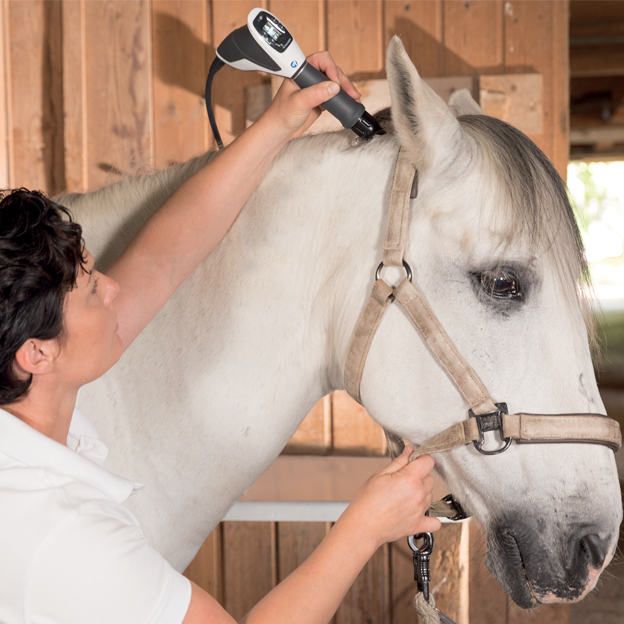Everything You Required to Understand About Equine Therapy for Mental Health And Wellness
Everything You Required to Understand About Equine Therapy for Mental Health And Wellness
Blog Article
Reviewing the Performance of Laser Treatment in Horse Treatment for Injury Rehab
The evaluation of laser treatment's performance in equine injury recovery depends upon numerous elements, including recuperation time, pain mitigation, and tissue regeneration. Scientific studies suggest noteworthy improvements in problems like tendonitis and osteoarthritis, associated to improved mobile feature and raised ATP production. Veterinarians frequently observe premium results with laser treatment compared to conventional methods, placing it as a critical component in equine treatment. Nevertheless, the requirement for constant surveillance and tailored therapy plans can not be overstated. What details professional evidence sustains these cases, and how do vets implement these procedures in practice?
Comprehending Laser Therapy
Laser treatment has actually come to be an essential device in veterinary medication, specifically in the treatment of equine problems. Understood for its non-invasive nature and efficiency, laser treatment involves the application of certain wavelengths of light to boost cells repair service and reduce inflammation. This healing modality is increasingly preferred for its capacity to accelerate the recovery process in equines struggling with a selection of musculoskeletal injuries and chronic problems.
The main mechanism behind laser treatment is its capability to improve cellular features. Additionally, laser treatment promotes vasodilation, enhancing blood flow and oxygen distribution to damaged cells, hence accelerating recovery.
In equine medication, laser treatment is specifically valuable for problems such as tendonitis, osteoarthritis, and injury recovery. The strategy is lauded for its pain-relieving residential properties, allowing steeds to gain back wheelchair and function a lot more swiftly. Veterinarians likewise appreciate its very little negative effects contrasted to other treatment modalities, making it a trusted and safe option for equine treatment.

How Laser Treatment Functions

Upon absorption, these photons cause a series of biochemical modifications, boosting mitochondrial function and bring about increased adenosine triphosphate (ATP) production. This surge in ATP speeds up cellular metabolism, promoting cells repair service and regrowth. In addition, laser treatment modulates inflammatory feedbacks by impacting cytokine levels and lowering oxidative tension, consequently easing pain and swelling.
Another considerable element of laser therapy is its duty in improving microcirculation. The therapy promotes vasodilation, boosting blood flow and oxygen distribution to damaged tissues (Equine Therapy). This facilitates the removal of mobile debris and sustains the expansion of fibroblasts and collagen synthesis, crucial for wound healing
Medical Evidence
The efficacy of laser treatment in equine therapy has actually been substantiated via different scientific studies, showcasing its therapeutic potential across a variety of conditions. A research study conducted by Turner et al. (2012) showed that equines treated with low-level laser treatment (LLLT) for ligament injuries displayed increased recovery compared to those getting traditional treatments.
Likewise, research study by Johnson and coworkers (2015) concentrated on equine muscular tissue injuries, exposing that laser therapy substantially expedited muscular tissue fiber regeneration and decreased muscular tissue tightness. Medical assessments have actually revealed that laser therapy can reduce persistent problems such as osteo arthritis.
Vet Insights

Veterinarians also appreciate the flexibility of laser treatment. She points out that laser treatment can be customized to the details needs of each horse, making sure optimum end results.
Moreover, veterinarians value the ability to integrate laser treatment with other treatment methods. This multimodal strategy can boost overall treatment efficacy, providing a comprehensive service for equine rehab. Such endorsements from experienced professionals underscore the expanding acceptance and application of laser therapy in equine medication.
Practical Factors To Consider
A key element of carrying out laser therapy in equine therapy includes recognizing the sensible factors to consider that ensure its effectiveness and safety and security. First and foremost, it is crucial to pick the suitable laser tool, as numerous types vary in wavelength, power, and penetration depth. Equine Therapy. Veterinarians should be skilled in these specifications to customize treatment protocols effectively per injury type
In addition, the frequency and period of laser treatment sessions need careful preparation to maximize restorative advantages while lessening any kind of potential negative effects. Consistent surveillance of the horse's feedback to therapy can guide needed changes in the therapy program. Developing a safe and regulated atmosphere during treatments is additionally important to avoid unintended direct exposure to laser exhausts, which might damage content both the equine and find more info the trainer.
Training and qualification of workers carrying out laser therapy are vital to ensure appropriate method and to copyright safety and security requirements. In addition, keeping precise documents of each session, consisting of laser setups and observed outcomes, is vital for reviewing the overall effectiveness of the treatment and for making data-driven choices.
Final Thought
Laser treatment has emerged as an effective method in equine injury recovery, offering substantial advantages in recuperation time, pain relief, and tissue recovery. For optimum results, continual monitoring and customized treatment protocols stay essential in leveraging the full possibility of laser treatment in equine treatment.
Report this page